|
Images from the 1887 and 1891 University of Wisconsin Law School graduating class photographs. University of Wisconsin Law Library Digital Repository, Alumni Photos Collection. By Amy Rabideau Silvers In the history of Wisconsin law, it’s safe to say there has never been anything quite like Kate Hamilton Pier and her daughters. Their story began in the 19th century, decades before women won the right even to vote. Miss Kate Hamilton Pier, daughter of mother Kate Hamilton Pier, graduated from high school in Fond du Lac at 16 and wanted to study law at the Wisconsin State University in Madison, now the University of Wisconsin. Mrs. Pier decided to attend law school, in part to accompany her daughter but also to develop her own business skills. “She greatly desired that her daughters should begin business life under her personal supervision,” according to a sort of who’s who published in 1893 with the weighty title A Woman of the Century: 1470 Biographical Sketches Accompanied by Portraits of Leading American Women in All Walks of Life, edited by Frances Elizabeth Willard and Mary Ashton Rice Livermore. “She had started alone and knew what pioneer business undertaking meant for a woman,” the entry continued. “She wished her girls to benefit by her experience.” Mother and daughter completed the two-year law course in one year, graduating in 1887 with high honors. By 1891, two younger daughters, Caroline Hamilton Pier and Harriet Hamilton Pier, followed suit. Of the eight women then practicing law in Wisconsin, four of them were named Pier. They became, as a headline in The Ladies’ Home Journal declared in 1892, “A Law Firm of Women.” That was just the beginning. “Besides practicing law, the Piers also successfully advocated for legislative changes that expanded opportunities for women,” said an article in Wisconsin Lawyer, published by the State Bar of Wisconsin. “One such accomplishment was to secure statutory amendments that removed bans prohibiting women attorneys from appointments as court commissioners.” The change cleared the way for Mrs. Pier to be appointed Milwaukee County circuit court commissioner in 1892—the first woman to serve as a judicial officer in the United States. The Wisconsin Lawyer article, written by Milwaukee County Circuit Court Judge Hannah C. Dugan, noted that it would be 44 years before a Wisconsin woman was appointed to serve as judge by a governor, and 78 years before a woman was elected. Daughter Kate was involved in several state Supreme Court cases, writing one brief soon after law school graduation and appearing with her father, attorney C.K. Pier. In 1889, daughter Kate—under the name Kate H. Pier—became the first woman to argue before the Wisconsin Supreme Court. She won that case and later others. In 1894, she became the first woman to argue before the U.S. Court of Appeals for the Seventh Circuit in Chicago, also a victory for her client. The four Piers were among the first 20 women admitted to the U.S. Supreme Court bar, though none of the Wisconsin women argued before that court. To further their feminist mission, “these first twenty women began to move each others’ applications for admission to the Supreme Court bar,” wrote Mary Clark in “The First Women Members of the Supreme Court Bar, 1879-1900." The younger Kate was part of that process, successfully moving to admit her mother and sisters to the U.S. Supreme Court bar. “Regardless of their aspirations to practice in the Supreme Court, these women were motivated to join the bar at least in part by their commitment to furthering opportunities for women. … Their roles as ‘first women’ in the law—attending and establishing law schools, holding positions within the legal profession previously closed to women, and joining bars—reflected and refined their consciousness of breaking down barriers for women in the legal profession. For them, joining the Supreme Court bar was another in a series of steps towards eliminating impediments to women’s participation in the legal profession.” A matter of appearances For its part, The Ladies’ Home Journal observed that the Piers were all “feminine” women who had lost “none of their womanly qualities.” Mrs. Pier was described as a handsome woman whose face “indicates a strong and sweet character, which would temper justice with mercy.” “Miss Kate is very beautiful,” the article continued. “It may be of interest to feminine readers to know that Miss Pier wore, when she plead and won her first case at Madison, a pretty black silk dress, brightened with a bit of color at her throat. It must have been a strange scene, when five most ‘potent, grave and reverend seigniors’ listened to a slip of a girl as she plead her case, and plead it well and with convincing power.” Caroline and Harriet, new members of the family law firm, were also described as pretty girls, “at whom one gladly looks twice.” Photographs of the September 1892 edition of The Ladies' Home Journal by Amy Rabideau Silvers. Indeed, it was not only the ladies’ magazine that covered matters of personal appearance during court appearances. The Milwaukee Daily Journal, reporting in 1889 on the younger Kate’s Wisconsin Supreme Court appearance, headlined one item “Raving Over a Lady Attorney.” “She is a beautiful girl, little over 20 years of age, a brunette, with bewitching eyes and very heavy lashes, but her striking feature is her splendid black hair, which falls nearly to the floor in a massive braid,” it read. Nowhere in that hundred-plus-word report did it mention the name of the case or other legal details. The Milwaukee Journal report on her case before the Court of Appeals did only slightly better, at least noting the case in question. “For several hours she compelled the attention of Judges Woods, Baker and Seaman, who sat in begowned dignity while Miss Pier expounded law principles,” it recounted. “The fair pleader wore a tightly-fitting gown of black velvet, with a big American Beauty rose pinned on her breast. The case was a personal damage suit against the Crane Elevator company, which Miss Pier won for her client in the lower court, but which the company appealed.” The appeals court upheld the verdict in Crane Elevator Co. v. Lippert. Kate’s client was a 15-year-old employee of the Western Union Telegraph Co., seriously injured after he fell navigating a dark hallway—no gas jets were lit—where the elevator company had left components during a replacement project. Early family life Colwert K. Pier (aka C.K. Pier), was born into a Fond du Lac County pioneer family. His future wife, Kate Hamilton, was born in Vermont in 1845 and later grew up in Fond du Lac, where she taught for three years after graduating high school. “Her first job was teaching school in the town of Empire. Here she received her board and $5 a month,” according to an obituary after her death in 1925. She next taught in the Fond du Lac schools, where high post-Civil War inflation helped push her wages to $22.50 a month. C.K. returned to his law practice after serving in the Union Army, and the two married in 1866. After the death of her father, Mrs. Pier began handling the estate left to her and her mother, which led to others asking her help on real estate matters. “Inheriting an estate from her father while she was still young, circumstances developed Mrs. Pier into one of the pioneer business women of Wisconsin,” an obituary said. “She had training in real estate in her father’s office … and in the bank and law office in which her husband was interested.” So when her oldest daughter wanted to attend law school, Mrs. Pier had reason to think a law degree could be useful to her, too. The Piers move to Milwaukee After graduating, the women returned to Fond du Lac and began practicing law. In 1888, the Pier family moved to Milwaukee, a more likely spot to support their burgeoning family of lawyers. Daughter Kate worked in the Wisconsin Central Railroad’s law department for a year before joining the family firm. C.K. died in 1895. The Pier women continued to practice. Mrs. Pier’s official duties as court commissioner came to include officiating at the weddings of daughters Caroline and Harriet. The elder Kate died in Fond du Lac at the age of 80. Daughter Kate married railroad contractor James Alexander McIntosh in 1901, moving to New York City and quitting her law practice. After her husband’s death in 1916, she returned to Fond du Lac, where she assumed management of the family’s real estate and was again involved in the legal community, including the Wisconsin Bar Committee on Women Lawyers. She died in 1931. Caroline Hamilton Pier married attorney John Roemer in 1897. As a young lawyer, she specialized in maritime and admiralty law. She died in 1938. Harriet Hamilton Pier specialized in real estate law and argued before the Wisconsin Supreme Court. She married Charles G. Simonds, an electrical engineer, in 1905, and later lived in Rhinelander. “There is probably no woman in the state who has a better idea of the lands of northern Wisconsin than Mrs. C.G. Simonds … who, although residing in Milwaukee, spends much time in the wilds of the north,” reported The Milwaukee Sentinel in 1919. “She is also considered an expert in judging lands and her advice is frequently sought.” An obituary in 1943 called her a pioneer timber cruiser (riding trains to estimate timber value), conservationist, philanthropist, and, of course, one of Wisconsin’s first women lawyers. All were “demonstrating most clearly that they are qualified to rank with men in the learned and honored profession of law,” opined The Ladies’ Home Journal article. “It is not probable that any one of these young ladies is unfitted for a home because she has identified herself with an unusual calling for a woman. Only a few years ago, if a woman found it necessary to work for a living, as she often did (apparently suffering both the curse of Adam and Eve) there was no career open to her save school-teaching or dress-making. Now, as a progressive woman says, ‘she can do anything where her petticoats do not catch in the machinery.’” This project is supported by grants from
0 Comments
"Evers' judges" is our effort to present information about Gov. Tony Evers' appointees to the bench. The information is taken from the appointees' own judgeship applications. Italics indicate direct quotes from the application. Typos, including punctuation errors, come from the original application even though we have not inserted “(sic)” after each one. WJI has left them as is.  Name: John R. Remington Appointed to: Milwaukee County Circuit Court Appointment date: Feb. 15, 2024, effective May 3 (term ending July 31, 2025) Education: Law School – Washington University School of Law, St. Louis, Missouri Undergraduate – University of Wisconsin-Madison High School – New Richmond High, New Richmond, Wisconsin Recent legal employment: September 2007-present – Partner, Quarles & Brady LLP, Milwaukee, Wisconsin Bar and administrative memberships: Wisconsin Supreme Court U.S. District Court for the Eastern District of Wisconsin U.S. District Court for the Western District of Wisconsin United States Court of Appeals for the Seventh Circuit District Court of New Jersey District Court of Kansas General character of practice: I have spent the past sixteen years, my entire legal career, at Quarles & Brady in its commercial litigation group. Almost 100% of my practice has been in civil litigation, though I have been involved in a few criminal matters and some transactional work. My practice focuses on unfair competition (including non-compete claims), creditor-debtor law, and healthcare related litigation. I have also taken on court appointments and pro bono matters (see below) which has broadened my experience to include Sec 1983 claims, municipal ordinance violations, and termination of parental rights. Describe typical clients: My clients have ranged from indigent pro bono clients to large multi-national corporations. I have most commonly represented health care providers, financial institutions, and a broad base of clients that utilize restrictive covenants. Number of cases tried to verdict: 4; does not include injunctions or restraining orders List up to three significant trials, appeals, or other legal matters in which you participated as a judge or lawyer in the past seven years: Biomin America, Inc. v. Lesaffre Yeast Corporation, et al., 20-cv-2109 (D.Kan.); 20cv2216 (Johnson Co, KS). Lead counsel for Lesaffre Yeast Corporation, the world’s largest yeast producer. We defended the company and two of its employees from allegations of trade secret misappropriation and breach of restrictive covenants, among related claims, in federal and state court in Kansas and prevailed in three successive stages: defeated a motion for temporary restraining order; prevailed on a motion to dismiss in federal court; and prevailed on motion to dismiss in state court. … I stands out in my mind because of the wide-ranging number of issues we briefed and argued in a compressed time frame. USA v. O’Rourke, 17-cr-495 (N.D.Ill.). In this matter, I represented Dura-Bar, a corporate victim of trade secret theft and coordinated with the United States Attorney and FBI to support the prosecution. The Defendant, our client’s former metallurgical engineer, downloaded company property to a thumb drive and was stopped by the U.S. Customs and Border Patrol as he attempted to board a flight to China. … Dates of my involvement were 2018 to 2020. This representation stands out to me because it was a criminal case and I was able to observe and participate in a three week jury trial. Staffworks Group-Wisconsin Inc. v. Service First Staffing Inc., 18-cv-392 (E.D.Wis). I was lead counsel in heavily contested non-competition claims, breach of fiduciary duty claims, and trade secret theft claims. The case settled following a favorable summary judgment ruling. Significant because of the depth of the litigation, including the opposing party’s summary judgment submission that exceeded 2200 pages. Dates of my involvement were 2018-2020. Experience in adversary proceedings before administrative bodies: None Describe your non-litigation experience (e.g., arbitration, mediation). I have been involved in dozens of arbitrations with FINRA (Financial Regulatory Authority) including several to final award. Likewise, I have had three substantive arbitration matters in front of the AAA (American Arbitration Association). I have participated in many mediations, including with former Milwaukee County Judges Charles Kahn, Richard Sankovitz, William Jennaro, and Michael Brennan. Position or involvement in judicial, non-partisan, or partisan political campaign, committee, or organization: None All judicial or non-partisan candidates endorsed in the last ten years: Jeff Davis, Court of Appeals, District II, 2021 Molly Gena, Milwaukee Municipal Court, 2023 Professional or civic and charitable organizations: Lake Park Little League, coach, 2022-2023 University of Wisconsin “W” Club, member, 2002-present Catholic East Elementary School, School Advisory Committee, 2022-present St. Thomas More Lawyers’ Society, board member and past president, 2018-present Enderis Park Neighborhood Association, member, 2009-present Milwaukee Rowing Club, member, 2007-present Significant pro bono legal work or volunteer service: I’ve kept a robust pro bono practice during my career, including most notably: Representing the birth mother in a Termination of Parental Rights jury trial in front of Judge Christopher Foley; handling several other TPR cases in Milwaukee County. Representing high school students charged with truancy in court appearances in Outagamie County as a core member of the Quarles & Brady truancy court project. First chairing a federal jury trial in front of Judge Adelman in the E.D. Wis., representing an inmate pursuing a Sec. 1983 claim; representing other inmates in similar cases that resolved short of trial. Quotes: Why I want to be a judge: I view this appointment as the best use of my talents to serve the public. My background as a civil litigator with sixteen years’ experience in a large law firm setting is helpful background to both the breadth of issues that come in front of the court and considerations that are typically outside the court’s view (such as client dynamics and discovery). I am applying to serve because I believe that I have the combination of intellectual curiosity, work ethic, and common sense to be a credit to this Court. I have been interested in a circuit court role for a long time, dating back to an internship at the Polk County Circuit Court in Balsam Lake during law school. I enjoy the range of the work—from esoteric to practical. Practice in a large firm setting has treated me well. It has been rewarding to solve problems for our clients and I have greatly enjoyed the collegiality of the firm. But this opportunity to serve the state and justice system, to use talents more directly to serve the public, is something I have always found attractive. People are at their best when doing work that is meaningful and challenging. For me, a circuit court position presents that opportunity. Describe which case in the past 25 years by the Wisconsin Supreme Court or U.S. Supreme Court you believe had a significant positive or negative impact on the people of Wisconsin. In my view, the Citizens United v. Federal Exchange Commission case has unfortunately had a significant negative impact on the people of Wisconsin. It is a case that presents difficult legal questions because it addresses a restraint on free speech; there are powerful arguments on both sides. However, the practical effects of equating the free speech rights of individuals and corporate entities are problematic (to say nothing about the competing lines of precedent implicated in the decision). The political process in this country has become more chaotic and public confidence in the democratic process continues to wane. Reasonable restrictions on election spending have, in the past, garnered wide support. Unfortunately, those efforts are likely non-starters under the current framework. Two or three judges whom I admire and why: Justice Byron White. I have always had a deep respect for people who perform at a high level in different arenas of academics, athletics, and professional accomplishment. From a farming background in Colorado, Justice White worked his way to the highest accomplishments in sports and the law: Rhodes Scholar, Heisman runner-up, NFL star, and John F. Kennedy’s first appointment to the Supreme Court. Though I do not agree with all of his opinions (there are nearly a thousand of them) he was pragmatic and his analyses were often fact-driven. The work ethic he demonstrated in his life is reflected in his writings. I highly recommend his biography, “The Man Who Was Once Whizzer White” which I read the summer of 2005 as I entered law school. Judge Molly GaleWyrick. I interned with Judge GaleWyrick in Polk County Circuit Court (Balsam Lake, WI) the summer after my first year of law school through a State Bar program. I spent that summer in the courthouse, reviewing pleadings with her, and discussing her decisions. It left a lasting impression on me how she treated each litigant and attorney with the same respect and seriousness in cases ranging from complex injury cases to fishing without a license. I observed how a good judge can impress on all parties that they had been heard and considered before reaching a decision. The proper role of a judge: A judge must discern the mandates of the legislature and apply discretion as appropriate within the legislative framework. That said, it is not a mechanical job. With all the talk of artificial intelligence, judging is an inherently human endeavor and every case presents its own considerations. A judge’s impartiality is critical and every judge must thoroughly and honestly reflect on not only on decisions but the decision-making process. A judge must also communicate competence and respect to all involved. A judge is a primary point of contact with the justice system for a litigant or criminal defendant. How they view the court system, and the fairness of a decision, is greatly influenced by how effectively a judge communicates and the strength of his or her reasoning. "Evers' judges" is our effort to present information about Gov. Tony Evers' appointees to the bench. The information is taken from the appointees' own judgeship applications. Italics indicate direct quotes from the application. Bold type within italicized answers comes from the original application. Typos, including punctuation errors, come from the original application even though we have not inserted “(sic)” after each one. WJI has left them as is. 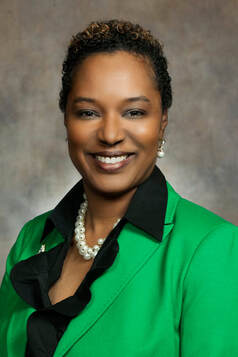 Name: Lena C. Taylor Appointed to: Milwaukee County Circuit Court Appointment date: Jan. 26, 2024, to a term ending July 31, 2025 Education: Law School – Southern Illinois University-Carbondale, Carbondale, Illinois Undergraduate – University of Wisconsin-Milwaukee High School – Rufus King, Milwaukee, Wisconsin Recent legal employment: January 2005-present – Wisconsin Legislator/State Senator, Wisconsin State Senate September 2013-December 2016 – Attorney, Pitman, Kyle, Sicula & Dentice, Milwaukee, Wisconsin April 2003-January 2005 – Wisconsin Legislator/State Representative, Wisconsin State Assembly Bar and administrative memberships: State Bar of Wisconsin General character of practice: When I began my career, I worked as a public defender for the State of Wisconsin, for 2 1/2 years. I represented indigent individuals in both misdemeanor and felony cases. In 1996, I opened my own legal practice. Leveraging my experience with the Public Defenders Office, my practice began with a fixed fee contract with a public defender’s office and concurrent hourly engagements with Attorney Anne Bowe. The scope of my firm encompassed a diverse array of legal areas, including business and real estate contracts, family law, personal injury, guardian ad litem, and bankruptcy. Predominantly, my focus resided in the realm of criminal law, encompassing federal and state jurisdictions. Within this domain, I adeptly navigated dismissals, negotiated deferred prosecution agreements, participated in pre-trial hearings, and engaged in the full spectrum of courtroom proceedings, from bail hearings and motion hearings to trials, sentencing hearings, and revocation hearings. Over time, my practice expanded to include three lawyers and a dedicated support staff. In 2004, I ran for public office. After securing an electoral victory, I reduced my practice’s caseload, completed pending cases, and turned my attention to my duties as an elected member of the Wisconsin State Legislature. Since that initial election, I have been elected to the Wisconsin State Senate in 2005, where I am currently serving my 5th, four-year term. In 2016, I rekindled my involvement in personal injury law. Subsequently, I collaborated as co-counsel with the Hausmann McNally law firm, where I had previously interned during my legal education. Later, I transitioned to a role with PKSD, assuming responsibilities in outreach and personal injury. However, the inherent challenges of balancing legal practice, with legislative duties, compelled me to reassess and prioritize my commitments. Over the past five years, my professional endeavors have shifted towards consulting in various domains, including real estate, business development, personal injury, and probate. This period has seen a limited caseload, predominantly centered on advisory roles with minimal courtroom obligations. Describe typical clients: The majority of my clientele has been comprised of businesses & individuals from diverse economic backgrounds. A significant number have been financially disadvantaged, from the greater Milwaukee area. They often hail from the community where I have resided my entire life. It has been important to me, to provide legal representation, guidance and advocacy to the community that helped nurture and support me over the course of my life. Originally my practice was litigation and general practice. More recently, I have done more consulting and little, to no, litigation. Number of cases tried to verdict: Two cases have been tried to verdict. One as counsel and one as co-counsel. List up to three significant trials, appeals, or other legal matters in which you participated as a judge or lawyer in the past seven years: I have not participated as a judge or lawyer in significant trials in the past 7 years, due to my role as a state legislator for the past 20 years. In addition, my limited practice has not included litigation. However, in the legislature, I have been appointed as a member of the Senate Committee on Judiciary and Public Safety, Joint Committee of Criminal Penalties Review, Judicial Council, and the Uniform Law Committee, in the last 7 years. In 2010, I blazed a trail as the 1st woman and Black person to be Chair of the Judiciary, Joint Committee on Criminal Penalties Review, and the Justice Reinvestment Oversight Committee, all of which have a direct impact on Wisconsin’s judicial system. Through those chairmanships, I led profound justice reform in Wisconsin, as outlined in the attached 2009-2010 report card. Since, I have authored and passed into law, more than 120 pieces of legislation during my legislative career. Below are examples that illustrate my work, in this area: 1. Redistricting - My legislative work on redistricting demanded extensive research, analysis, bill drafting, and negotiations. Furthermore, it exerted a substantial influence on the research, case law, legal arguments, and the subsequent decision of the US Supreme Court. This decision identified instances of voter rights violations within the Wisconsin maps, particularly against the black community, as outlined in the Court’s order. 2. Independent Criminal Investigations - Crafting legislation for Independent Criminal Investigations, in cases of police-involved deaths serves as an illustration of my legislative work. This involved collaborative drafting and negotiations across party lines, particularly with Representative Gary Bies. The foundation for this legislation was laid upon the groundwork established by Representative A. Polly Williams, who initially advocated for inquests in police officer-involved deaths. While not entirely originating from my efforts, I, as the Lead Senate author, collaborated with Representative Bies to establish the nation’s first accountability process for officer-involved deaths. Similar to the rigor of the practice of law, research, drafting, and negotiation, my work, passage of legislation, and contributions influenced decisions of the U.S. Supreme Court. Experience in adversary proceedings before administrative bodies: In my capacity as a legislator, serving on both the Judiciary and Joint Committee on Finance, I actively engaged in hearings with Cabinet Secretaries and staff from administrative agencies. These proceedings necessitated thorough preparation of pertinent questions and the extraction of information from those appearing before the committees. Additionally, during my time in private practice, I provided legal representation to individuals involved in revocation and unemployment hearings. Describe your non-litigation experience (e.g., arbitration, mediation). My legal experience, outside of litigation, is predominantly practice, at present. While the majority of my consultations are pro bono, the skills employed are akin to those utilized in legislative negotiations. I assist in elucidating processes, drafting documents, clarifying legal principles, and guiding parties through challenging landlord-tenant or family law issues. Additionally, I engage in negotiations to reach settlements in personal injury claims or business transactions. Position or involvement in judicial, non-partisan, or partisan political campaign, committee, or organization: I have not held an official position in a judicial, non-partisan, or partisan, political campaign, to my recollection. My engagement in political activities encompasses providing guidance to candidates and volunteering in various capacities such as door knocking, fundraising, and making calls for both local and out-of-state races. This involvement spans partisan and nonpartisan races at the local, state, and federal levels. Previous runs for public office: Wisconsin State Senate, elected, 2005-present Wisconsin State Representative, elected, 2003-2005 Milwaukee County Executive, lost, 2008 Mayor of Milwaukee, lost, 2020 and 2022 Lt. Governor, withdrew before primary, 2022 Milwaukee Municipal Court, lost, 2023 All judicial or non-partisan candidates endorsed in the last ten years: Everett Mitchell, State Supreme Court, 2023 Aisha Carr, MPS School Board, 2021 Shandowlynn Hendricks-Williams, MPS School Board, 2023 Pedro Colon, Circuit Court Judge, 2011, 2017 Deb Kerr, DPI State Superintendent, 2021 Rebecca Dallet, State Supreme Court, 2018 Professional or civic and charitable organizations: Wisconsin State Bar, 1996-present National Organization of Black Elected Legislative Women, 2004-present National Black Caucus of State Legislators, 2004-present Rodel Fellow, 2013-present NAACP, 1993-present Alpha Kappa Alpha, Sorority, Inc., 1989-present Rainbow Push Coalition, 2008-present Significant pro bono legal work or volunteer service: I have engaged in a considerable amount of volunteer work, and while it’s challenging to recall every instance, I have selected three endeavors that I believe exemplify my dedication and compassion towards others. 1. Free Legal Clinic - For two decades ago, I initiated a free monthly legal clinic at Greater New Birth church. This clinic facilitated on-site driver’s license assistance, featuring the collaboration of municipal court judges, DMV staff, and legal professionals to guide individuals through immediate challenges. Additionally, we extended support for various issues and provided referrals as needed. 2. USDA Farmers to Families Food Boxes - For several years, I coordinated the distribution of 30,000 food boxes per month in collaboration with USDA partners. During this time, I also played a role in inspiring and mentoring others to participate in food distribution activities according to their capacity. Notably, the initiative spearheaded by Farina Brooks, which evolved into the Dream Team, now conducts pop-up events across the city, delivering essential food supplies. 3. Housing for Homeless - My commitment to aiding the homeless aligns with the legacies of my mother and grandmother, both of whom dedicated themselves to this cause. I have contributed by providing real estate at below-market rates, and in some instances, at no cost, to men, women, and families facing housing insecurity due to a variety of reasons to include re-entering citizens, addiction, domestic violence, unemployment, and mental health. Quotes: Why I want to be a judge: When I made the decision to attend law school, I had a very singular focus. I wanted to see corrections in our judicial system that created disparities in the treatment of our citizens. As a student of history, I understood, in particular, that many of the seismic shifts in behavior along racial and gender lines, started with changes to the laws. It’s never lost on me that I am just 2 years older than the 1965 Voting Rights Act, 3 years older than the 1964 Civil Rights Act, a few years older than Affirmative Action, 6 years older than the right for women to have control over their reproductive health, and 13 years older than Brown v. Board of Education. These changes to law made monumental differences between my life and that of my parents. While slow to be implemented and accepted, the rule of law still stood. It was a starting point to push back, challenge, and enforce fair treatment. What I would later learn is that “fair” is not always “equitable”. Yet like a dependable friend, the law could be counted on to be responsive to the will of the people. Lady Justice, often accused of not being so blind in the dispensation of justice, was a symbol of what we aspired to be. The law dictates what we are and what we do. Understanding the inherent power and opportunity to affect our community, I knew that I wanted a seat at the table. Whether at a defendants table, legislative desk, or judicial chamber, my career path has been about serving the needs of this community. I have been committed to ensuring a justice system that is responsive, representative, and above reproach in the application of the law. Describe which case in the past 25 years by the Wisconsin Supreme Court or U.S. Supreme Court you believe had a significant positive or negative impact on the people of Wisconsin. Without hesitation, I believe that the 2011 redistricting case has had the most detrimental impact on Wisconsin’s legislative process and voters. The historic lawsuit before the U.S. Supreme Court involving Gill v. Whitford spoke to the harmful effects of partisan gerrymandering, that deprived residents the rights to representation. The state’s constitution is very intentional about compact districts, maintaining communities of interest, and requires that districts be bound by county, precinct, town or ward lines. In November 2016, the 2011 maps were deemed an unconstitutional partisan gerrymander that violated both the Equal Protection Clause and the plaintiffs’ First Amendment freedom of association. We know, ultimately, how the case played out. Appeals ensued, motions to stay the case were granted, and the case was drug out until the U.S. Supreme Court ruled on partisan gerrymandering appeals in other states. In 2019, the U.S. Supreme Court’s held that partisan gerrymandering claims were not capable of being decided by legal principles or by a court of justice and the Wisconsin case was dismissed. In the meantime, we have held elections in the state in which Democrats have won a majority of the statewide Assembly vote, but Republicans have walked away with 2/3 of the Assembly seats. In my home county, Milwaukee, 70% of the state’s Black population lives here. Yet, Milwaukee County voters were spread across 8 predominantly white Assembly districts, in effect cracking or diluting the Milwaukee County (black vote) The legislation that we see every day in the halls of the Capitol are impacted by this unfair advantage. Bills that address interests of concern to liberal leaning concerns, Black voters, urban residents, and others are difficult to get passed into law when conservatives have a super-majority. The positive aspect of negotiation and compromise is also adversely impacted. However, it is in compromise that the needs of most residents are met. We have furthered racial, regional, resource, and political divides because of unfair redistricting processes. Two or three judges whom I admire and why: 1. Judge Everett Mitchell – I value his life story and determination to complete his education and care for his family. I appreciate how he sees the humanity in many individuals and families that come through his court. I like that he connects with them, and while administering his role as judge, he incorporates hope, reconciliation, and change where possible. I am thrilled that he is representative of the community he serves and an example of what can be. 2. Chief Justice Shirley Abrahamson – She was a trailblazer, much like Judge Vel Phillips, whom I also admired. As the first female Justice on the Wisconsin Supreme Court and the first female Chief Justice in state history, I had a front row seat to it all. Watching her in the Capitol, I was struck that she was often one of the last people out of the building at night. She remembered her roots and the people who helped her along the way. Aside from being a brilliant legal mind, she was humble and kind. Never too busy to talk or offer guidance, I was enamored by her style as much as I was her substance. 3. Chief Judge Maxine White – Judge White represents the dreams of my ancestors. Often it is said in the Black community that enslaved people endured and sharecroppers toiled, because they could see the future. They believed in the power of education and what was possible. Judge White often talks with great affection and stark reality about the challenges her family faced. Her story is not that different from a lot of Black people from the South, but her outcomes have been significant. She is a powerful example of brilliance nurtured, mentors engaged, and opportunities provided and taken. Her practical approach to justice is inspiring. Her even-handed application of the law is admirable and her connection to this community in invaluable. The proper role of a judge: Aside from the obvious, of leading court proceedings, using established laws and guidance to determine sentencing, and ruling on the constitutionality of various laws and legal precedents, depending on the type of judge you are, there is also a practical role of a judge. A judge should be an independent thinker, who respects and is knowledgeable of the law. A judge should be neutral and able to listen to all involved. The judge’s decisions should be reasonable and fair minded. A judge must assure that all parties have appropriate representation, because they also have a role to protect the integrity of the legal system. I also believe that judges are role models and should educate the community on how the legal system works. As a result, I believe their roles are not limited to the courthouse. There is a role and place to engage in and with the community, to create and champion innovative initiatives that can bring about tangible reforms in addressing systemic issues impacting the courts and community. By Alexandria Staubach
Evan Goyke is being sworn in as Milwaukee city attorney today during a ceremony at City Hall. Goyke recently won election to the position after challenging incumbent Spencer Tearman. Tearman’s administration has been embroiled in controversy since his election in 2020, with accusations ranging from sexual harassment and creating a hostile work environment to, most recently, an inspector general report that found that Tearman’s deputy city attorney, Odalo Ohiku, may have continued to do private legal work while serving as deputy. Readers in Wisconsin’s 18th Assembly district are likely familiar with Goyke. He has served as the district’s representative in the state Legislature since 2012. A longtime supporter of criminal justice reform, Goyke advocated to relax Wisconsin’s pardon and expungement laws, among other things. WJI’s Alexandria Staubach spoke with Goyke last week, during a break between briefing sessions bringing Goyke up to speed on the inner workings of Milwaukee’s municipal government. Staubach: How do you view the role of city attorney? Goyke: I view the firm (the city attorney’s office) as having two functions. I look at it as internal and external. Some of the internal roles, like defending and evaluating liability during litigation, contribute to the internal workings of the city. This most basic function of the firm occurs largely behind the scenes. This is the part that the public doesn’t engage with but is a core function for the firm to be in working order before the office can accomplish any public facing objectives. Its other role is external, in that the office is directly engaging with the public. The most basic example is municipal court, but we also have a really important role in economic development protections and public safety initiatives. I think over the last few years the city has failed to meet the demands of the office’s internal functions and you can’t do those external jobs well if the internal functions aren’t working properly. The goal for the office will be first to meet those essential internal functions and then rebuild its external functions. You’ve long been an advocate for criminal justice reform. How will that intersect with your new role as city attorney? My experience in criminal justice certainly informs how I want to approach the prosecutorial roles of the city attorney. We have to ask ourselves, “What do real people and real people’s lives look like in Milwaukee?” I think sometimes people allow municipal courts to go unexamined because jail is not really an available penalty. In my time advocating for justice reform, if we go back and look at people’s records, it often starts in municipal court. Unpaid citations and license suspensions have a huge impact on people’s lives and often that’s where a criminal record begins to accumulate. Municipal court is often the seed. Then of course I hope to bring transparency to the office and to make sure we’re administering equitable outcomes for Milwaukee. I can’t snap my fingers here but I want to be a partner in getting to “yes” and making changes that will lead to equitable outcomes — we will need judges though, and we will need city counsel in order to deliver better outcomes. The city attorney’s office has a reputation for being understaffed. What will you be looking for when filling vacancies? I’m going to be looking for experience given the enormous turnover recently. The firm has lost a lot of its institutional knowledge. But I will also be looking for mission driven people. People with a passion for the public sector and a passion for our community, who care about the city — staffing with people who want to be an important part of the city’s future. What is the biggest challenge the city attorney’s office currently faces? For three years it’s been in crisis management mode. The biggest challenge will be getting out of that and charting a course forward for 2024. We can’t achieve any of the greater responsibilities of the office if we’re missing court dates or not fulfilling the internal functions of the firm. Can you forecast any special projects for the office? I definitely want to explore options to mitigate the punitive nature of fees and fines in municipal court. Where appropriate I think we can focus on community service rather than payment. While license suspension for failure to pay is warranted in some situations, I also think there are some situations where it will only make things worse for that individual. If a person’s background and behavior doesn’t warrant suspension, why are we doing it? I want to be part of offering alternative options. After we’ve addressed the internal and external functions of the firm, I also want to implement a program directed at housing and building code violations. There are a lot of people paying good money for problem property. One of my central objectives will be implementing new strategies to enforce building and housing codes and hold problem property owners accountable. But again, these things only come as we put the fires out and push forward. By Alexandria Staubach
On April 4, the Dane County Board of Supervisors unanimously approved doubling the daily wage rate paid to in-custody workers at the county jail. Incarcerated persons at the jail previously earned a wage of $3 per day for their work. Resolution 382 lifts the wage to $6 per day. The county said in the resolution that the prior rate was "insufficient” and that it would seek additional means to improve wages and combat poverty upon reentry for incarcerated persons, calling the wage raise an “interim step.” The Dane County resolution recognizes that most correctional facilities in the United States do not pay the $6 a day the county now will, and that Dane County seeks to “be an example for other communities on this issue.” Dane County has been spending about $24,000 per year on wages to incarcerated persons. The doubled annual cost is unlikely to impact the sheriff’s budget, according to a consensus of the county’s Personnel & Finance Committee. The resolution does not provide for more jobs at the jail. In November, several Democratic legislators introduced a package of 17 bills to improve conditions at correctional facilities throughout the state. The package included Assembly Bill 816/Senate Bill 862 to raise the minimum wage for incarcerated people in jails and prisons to a minimum of $2.33 per hour, which is the rate for tipped workers. The bills, introduced in December 2023, did not progress before the Legislature adjourned last month. The Dane County resolution was sponsored by Dana Pellebon, Kierstin Huelsemann, Michele Ritt, Sarah Smith, Heidi Wegleitner, and April Kigeya. By Margo Kirchner
Wisconsin courts will now accept written declarations instead of notarized affidavits in civil litigation. A new law eliminates the need for a notary’s signature and stamp on various documents in civil proceedings. Rather than swearing to the truth of written statements before a notary, a person may now “declare under penalty of false swearing under the law of Wisconsin” that what they are signing is true. The law should reduce litigation costs and simplify the submission of evidence during pretrial stages of a civil case. Attorneys will not need their clients to come to an office to get signatures notarized before filing evidence on summary judgment motions. Individuals representing themselves will not need to find and pay for notary services to file affidavits of poverty or other documents. Affidavits with a notary’s signature and stamp are still accepted. The law simply gives declarations made under penalty of perjury the same effect. Called the Uniform Unsworn Declarations Act, the law brings Wisconsin in line with federal courts and several other states. The use of declarations instead of affidavits has been the norm in federal courts for almost 50 years. The new law has some exceptions. Oaths of office, depositions, and real estate documents will still require swearing before a notary. The Wisconsin Judicial Council, a state agency focused on rules of procedure in the courts, recommended the law. Judicial Council members Sen. Van Wanggaard (R-Racine) and Rep. Ron Tusler (R-Harrison) sponsored the bill and steered it through the Legislature. The Uniform Law Commission, a nonprofit and nonpartisan organization advocating for consistent laws across states, supported the bill in written testimony before Senate Committee on Judiciary and Public Safety. Gov. Tony Evers signed the law (2023 Wis. Act 245) on March 27. It went into effect on March 29. Previously, Wisconsin law did allow declarations made under penalty of perjury by persons outside of the United States. Act 245 now permits declarations by persons located within the United States as well. For those following WJI's candidate questionnaires or interested in judicial elections across the state, here are the results of yesterday's 10 contested races according to unofficial results posted online today:
Wisconsin Supreme Court declines request to determine maps for recall and special elections4/3/2024 The Wisconsin Supreme this morning denied a motion by the Wisconsin Elections Commission seeking clarification on what maps apply to recall and special elections.
The court issued the order in the Clarke redistricting case. The court stated in the order that “(o)n December 22, 2023, we enjoined the ‘Elections Commission from using [the prior] legislative maps in all future elections’ because the maps violated the Wisconsin Constitution.” The Legislature then passed redistricting maps proposed by Gov. Tony Evers. On Feb. 19, 2024, Evers signed them into law as 2023 Wisconsin Act 94. Act 94 states that the new maps go into effect for seats up in the 2024 fall general election, leaving a question about what maps apply between now and then for special and recall elections. The old maps are unconstitutional, but do the new maps apply yet? The Legislature has ended its session so a legislative clarification looks unlikely. The general election is on Nov. 5, 2024, with a primary on Aug. 13, 2024. A special election is due for Senate District 4. The seat is vacant after Sen. Lena Taylor resigned her seat to become a Milwaukee County Circuit Court judge. Meanwhile, a second effort to recall Rep. Robin Vos (R-Rochester) is underway. The court said that weighing in on what maps apply to special and recall elections would be an impermissible advisory opinion. “Act 94 is not before us in the Clarke case and any examination of these maps departs from the relief requested in Clarke v. WEC,” the court wrote. The court said it would not "make a pronouncement based on hypothetical facts," adding that the Wisconsin Elections Commission bears statutory responsibility for administering elections. "Evers' judges" is our effort to present information about Gov. Tony Evers' appointees to the bench. The information is taken from the appointees' own judgeship applications. Italics indicate direct quotes from the application. Bold type within italicized answers comes from the original application. Typos, including punctuation errors, come from the original application even though we have not inserted “(sic)” after each one. WJI has left them as is. 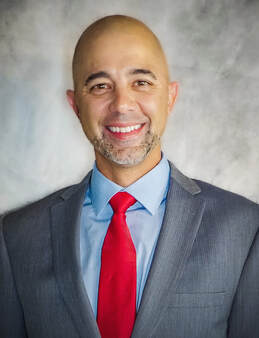 Name: Frank Gagliardi Appointed to: Kenosha County Circuit Court Appointment date: Nov. 30, 2023, to term ending July 31, 2024 (running on April 2, 2024 ballot for 6-year term) Education: Law School – Thomas M. Cooley Law School, Lansing, Michigan (now Western Michigan University Cooley Law School) Undergraduate – University of Wisconsin-Parkside, Kenosha, WI High School – St. Joseph’s High, Kenosha, Wisconsin Recent legal employment: October 2006-present – Attorney/partner, Gagliardi Law, LLP, Salem, Wisconsin August 2021-November 2023 – Commissioner, Branch 1, Kenosha County Courthouse October 2012-January 2020 – Commissioner, Branch 1, Kenosha County Courthouse Bar and administrative memberships: State Bar of Wisconsin U.S. District Court for the Eastern District of Wisconsin General character of practice: I practice law in Kenosha County, where we help people in various areas of the law. We have a smaller size firm but work as a team to help our community members when they have legal needs. The environment in which I practice allows me the ability to help make a difference to the people we grew up with and those that now call our great County home - which I see on a routine basis. Regardless of the area of law that we are helping someone with, I am always trying to find alternative ways to resolve disputes. When you seek alternative ways and are successful, the clients appreciate your efforts to minimize costs and stress. While sometimes you cannot avoid the courtroom, there is always a need to limit unnecessary litigation and other collateral damage. Describe typical clients: Our typical clients are the people of the community. Your every day person that we call our neighbors. We service a few companies, but most of those are run by someone we have a prior relationship with. The area that I specialize in is Litigation. My focus has been in the areas of Personal Injury and Family Law. However, I have also handled: Medical Malpractice, Probates, Contested Estate Litigation, Estate Planning, Civil Litigation, Real Estate Litigation and Real Estate Transactions. Number of cases tried to verdict: Four jury trials and approximately 10 bench trials per year for the past 15 years List up to five significant trials, appeals, or other legal matters in which you participated as a judge or lawyer in the past seven years: David J. Duncan vs. Dana R. Duncan 15-FA-288 I have represented David Duncan in his Divorce and Post Judgment Matters. This has been on ongoing litigation. There are many challenging factors to it on the family side and Attorney Anderson and I are working hard to minimize the collateral damage that results too often in these family law cases. Attorney Anderson and I have worked against each other in many cases throughout the years of my career. Dale Schramm et. al. vs. Ivan Jovicic et. al. 17-CV-7 I represented Plaintiff, Dale Schramm, in an Auto Accident/Trucking Accident case. This litigation was extensive. Fault was not an issue, but finding an ability to make the Defendant financially responsible was a challenging task. This case settled in Mediation. Debra Gilley et al vs. State Farm Mutual Automobile Ins. Co. et al 16-CV-1263 I represented Plaintiff, Debra Gilley, In her Auto Accident case. We went through extensive discovery and ultimately reached a resolution in Mediation. Attorney Alia and I have worked on cases together for quite a few years. We regularly conduct discovery and are both reasonable in attempting to reach resolution versus wasting client funds and Court time. Estate of Arthur B. Bushing 12-PR-65 I represented Co-Personal Representative of the Estate: Carol Husnick in a very complex Probate Litigation. I cannot even begin to explain the process that we went through in this case as it was contested from every side and aspect you can imagine. Attorney Geraghty and I had to navigate this case with the assistance of Judge Bruce Schroeder to the end. Experience in adversary proceedings before administrative bodies: N/A (I have only assisted in a couple of Worker’s Compensation cases in my career. I was not the attorney at our firm appearing at the hearings for these cases, however, I have assisted in the preparation for hearings before the ALJ.) Describe your non-litigation experience (e.g., arbitration, mediation). I am a certified mediator which certification was obtained in Law School. The skills that I learned from that training were great and have developed over the years. Almost every area of law that I practice has some form of ADR that is used to complete or attempt to complete the case. I have done several three panel Arbitrations (these were all day presentations to the panel that followed the submission of our case summary packets). I have participated in countless Mediations using a variety of Mediators throughout the State (where I have mediated small claims issues with the volunteer Mediators at the courthouses, family law issues and have mediated cases that involved over a million dollars in settlement funds). Overall ADR is a great process that should be seriously considered by every attorney not just a process that they have to get over and done with before they get a chance to try the case. Too many attorneys do not prepare for the mediation in a proper way. Whether they do not prepare their client with reasonable expectations or ranges of settlement. Or they do not communicate with the other involuntary parties (subrogation) to talk about global settlement. Regardless it is disappointing to see other attorneys in our local area not want to use a valuable tool the way ii should be used. The question that I always have a problem with when the other side Is not prepared or taking this seriously is: "Is the decision to not sit down and talk fueled by the client?" (If so. we cannot force them to give up their day in Court as everyone should have access to the Court for legitimate disputes/claims.) Or, "Is the decision fueled by the attorney so that they can run up a trial bill for fees?" Some of the most difficult cases I have ever had (and some of my best results for the client) have been completed through the process of ADR. Position or involvement in judicial, non-partisan, or partisan political campaign, committee, or organization: None Previous runs for public office: N/A All judicial or non-partisan candidates endorsed in the last ten years: None Professional or civic and charitable organizations: Lakeland Little League, roles including clinic director, safety officer and former president, 2006-present Westosha-Salem Kiwanis Club, member at large, 2006-2010 VA Glory Fastpitch Softball, coach/mentor, 2020-present Significant pro bono legal work or volunteer service: Our firm, including myself do legal pro bono work on a yearly basis. … My most significant legal pro bono work has been done through Westosha-Salem Kiwanis Club where I got them qualified as a 501c3 organization … This process took over 50 hours .... The other significant volunteer work that I have done relates to our local Little League, “Lakeland.” I cannot quantify how many hours I have volunteered to this organization or to our schools in Kenosha County. … I have personally been involved in building our Brightondale Complex and the recent upgrades. ... I feel very passionately about our youth and their future. If you are someone who thinks that coaching youth sports is just about teaching them the game, then you are sadly blind! Volunteering in youth sports and seeing the children grow (mentally and skill wise) is more rewarding than anything else I have ever done (aside from raising my own children and family). … Baseball is a game of failure and to be prepared for life you need to be prepared to compete and fail at times, but then have the strength to pick yourself back up and try again! THE LAST FOUR YEARS I HAVE COMMITTED MYSELFTO AN ADDITIONAL VOLUNTEER ROLE AS A COACH FOR VA GLORY WHERE I HELP STUDENT ATHLETES IN THEIR JOURNEY TO GET SCHOLORSHIPS TO PLAY SOFTBALL WHILE OBTAINING A COLLEGE EDUCATION! Quotes: Why I want to be a judge: Since I started Law School, the idea of becoming a Judge has intrigued me. I also have strong feelings about giving back to our community. I began with what I could control, which was moving back home, to Kenosha County, to start a family. When we got back home, I started volunteering and coaching. For me it is not just giving back to our community, but more of being a part of what molds our future. As a Judge I would have an opportunity to participate in a different role in the current system, which needs to be continually modified to get better with the times and what is happening all around us. I will be seeking equality in the system if I receive this privilege. I have many friends and family that have different ethnic back grounds, religious beliefs and sexual orientations – some have not been treated fairly based on their beliefs or skin color. We need to ensure every person with a legitimate claim gets access to our Court system and that the People are heard! Faced with the fact that I am not a Criminal Law attorney (and having an ultimate goal of being a Judge), I sought out the Branch 1 Commissioner position. Through this position I have covered the bench in areas I did not practice. To prepare, I was required to do six days of courtroom observation before the Judges would let me hear a full calendar. Through these experiences I was able to get familiar with some of the proceeding in cases such as: criminal intake court, juvenile citations, commitments, TRO hearings, setting bonds and having probable cause hearings. Although the criminal side of law is not as familiar as civil for me, it will be a challenge I am willing to accept and thrive at when I have that opportunity in the rotation. I am aware that the idea of a perfect person does not exist! That fact does not mean we have to turn our backs on someone who has made mistakes – everyone makes them. Wisconsin already has a problem with over populated jails and prisons. We need to continue exploring alternative ways to rehabilitate the people that make mistakes or those who are ill. Possibly consider a mental illness court, or systems to get these people helps versus incarceration. People who are ill with mental disease or addictions can still be productive, if they get the tools needed to rehabilitate and have the desire to apply them. Not everyone will be a candidate for these programs and some will need to be confined but that is what it is important to listen and think out the box when being in the position of the Judge. Do not just be a Judge – BE HUMAN TOO! I am confident in my abilities, experiences and courtroom temperament to give this great State a lifelong commitment that will make a difference! Describe which case in the past 25 years by the Wisconsin Supreme Court or U.S. Supreme Court you believe had a significant positive or negative impact on the people of Wisconsin. State of Wisconsin vs Gerald Mitchell … (2019), which is a Fourth Amendment case. There have been a string of Fourth Amendment cases that have been coming through the system as of late. These cases include (Birchfield v. North Dakota … and Missouri v. McNeely …) but are not limited to the ones I am listing. The Mitchell case is a Wisconsin case where Mitchell was intoxicated and arrested for an OWI after he blew a .24 during a traffic stop. He was then taken to the police station and put in a holding cell. Mitchell then passes out in the cell, and the officer cannot perform the more reliable OWI test using better equipment. The officer takes Mitchell to the hospital and still not conscious they draw his blood (without a warrant). Mitchell moved to suppress the evidence of the blood draw and the appeals followed. This case went all the way up to the U.S. Supreme Court. The issues relate to protections of the Fourth Amendment against unreasonable searches and seizures, as well as warrant exceptions. Ultimately the USSC determined that such a method of extracting an individual’s blood does not violate the Fourth Amendment and was therefore lawful. There are many ways that these cases impact the People, the Courts and Law Enforcement. The decision (regardless of the USSC reasoning or the reasoning of the Wisconsin Supreme Court) impacts the People as it alters the understanding or protections that the Fourth Amendment stands for. It also puts more discretion in the law enforcement officer, without checks and balances of obtaining a warrant. That will lead to additional litigation, which the Court will have to determine if the officer used proper discretion to determine the admission of evidence collected. It also creates some additional questions that many need to be dealt with in the higher levels of Court as the USSC addressed issues that the Wisconsin Supreme Court did not even raise. Upholding the Constitution and the Law is part of the role of a Judge. Judges do not make Legislation, however, the decisions that are being made by the Courts (lower and upper) are having direct impact on the rights that the People have stemming from our Constitution. Where do we begin and where do we stop when it comes to clarifying these rules so that we do not strip away all of its protections, while at the same time weighing the safety of the public? That is not a decision I have to make but it is a decision that will continue to impact our People and State. Two or three judges whom I admire and why: Hon. Judge Mary Wagner — I have known Judge Wagner since I was young. I had my very first hearing before her in my first months of practice. She let me put in my questions as it was an uncontested guardianship. Then she followed up with a few questions that I had forgotten to ask out of nervousness. She detoured making comments of being proud of me for becoming an attorney going into some history about my family. She went on to tell a story of remembering me running around my Father’s office in diapers! (Yes she did and it is probably on that record from 2006.) Why am I bringing up this story? Because I am giving you an example of the most caring and loving person we have on the bench in the State of Wisconsin. If I can sit on the bench and have a fraction of the amount of passion for our youth and community as that great woman has – I will consider myself blessed. She is really a role model for Judges as it relates to the more complex, abstract and indirect impacts someone in this position can have on the community. She has always been there for me as well! Giving me guidance and insight when all I could see was walls around me. These gifts are valuable when you are a young attorney and feel somewhat lost or overwhelmed. She is truly a very special person and that is why I admire here so dearly! Justice Shirley S. Abrahamson — Justice Abrahamson’s reputation speaks for itself. However, the reasons that I admire her is her relentless and endless pursuit for justice to all victims! On a personal side of things she took the time to have a dinner with my Nana (Carolyn Gagliardi) at an event. To this day my Nana appreciates the time and conversations that she shared with her. She was a special person to our great State and to those who she got to have personal contact and relationships with. I can hope to be more, but I will likely only be a fraction of the person she has demonstrated. She was a special Justice in our system! The proper role of a judge: The Judge plays an important role in our court system. You can start by considering the description in a simple manner focusing on the daily tasks of the Judge in the courtroom. However, you must consider the greater impact that a Judge has on the community as a whole. I will start on the simple, then conclude with the complex, abstract and indirect impact that Judges have on our community. As a Judge you are tasked with the daily duties of operating your courtroom in a systematic manner: getting through your daily calendar, being prepared to hear motions, researching issues that are presented to your court, ensuring that your courtroom is one of open access where people get their day in court — so they are heard and being a decision maker (deciding issues on: evidence, motions, bench trials, commitments and sentencing etc.). There are also other duties such as granting marriages or annulments. There are even more difficult issues of considering juvenile petitions for potential abortions or petitions relating to abuse. Part of the role is to also make timely, clear and balanced decisions. When I say balanced I am referring to being the gate keeper of evidence and objectively listening to the evidence presented, thereby weighing the same while making unbiased decisions. These decisions also need to be made in a timely manner. Holding parties hostage for a ruling only frustrates their situation and fuels the desire for the parties to negatively interact as they are stuck in turmoil until you make a decision. Being human, having empathy and being considerate of all those in the process (the parties, clerk, bailiff, court reporter, courthouse staff and your judicial peers), also play a significant role in being a Judge. The Judge also had an additional role outside the courtroom. As a Judge you are a member of the community who is often held to a higher standard. Whether that is fair or not – it is a reality. So as a Judge you can do one of two things. You can go to the courthouse and run your courtroom efficiently and honorably, then go home. Or you can continue your public service outside the courtroom. You can go out into the community and make a difference. Making a difference comes in many forms and cannot be defined because the trigger causing the need to do something resulting in making a difference almost always presents itself in unexpected and unique ways. When those situations present themselves all you can do is “the next right thing!” Bottom line is that a Judge needs to step up and accept the fact that they have more than one hat that needs to be worn at all times. |
Donate
Help WJI advocate for justice in Wisconsin
|
Copyright © 2024 Wisconsin Justice Initiative Inc.
The Wisconsin Justice Initiative Inc. does not endorse candidates for political office. The Wisconsin Justice Initiative Inc. is a 501(c)3 organization.
The Wisconsin Justice Initiative Inc. does not endorse candidates for political office. The Wisconsin Justice Initiative Inc. is a 501(c)3 organization.



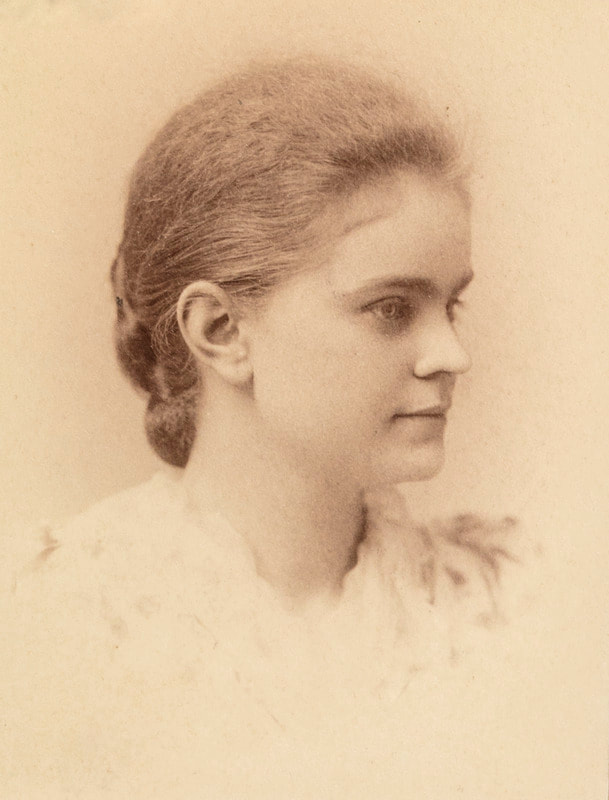
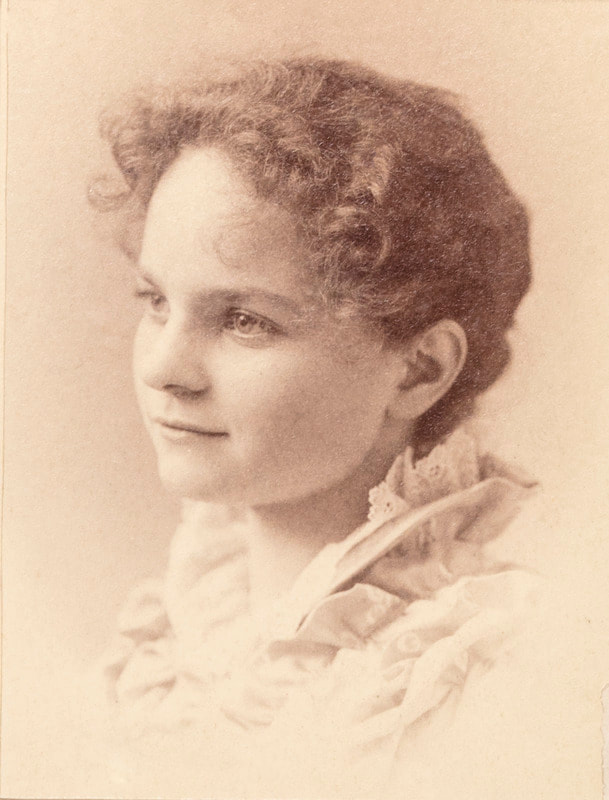
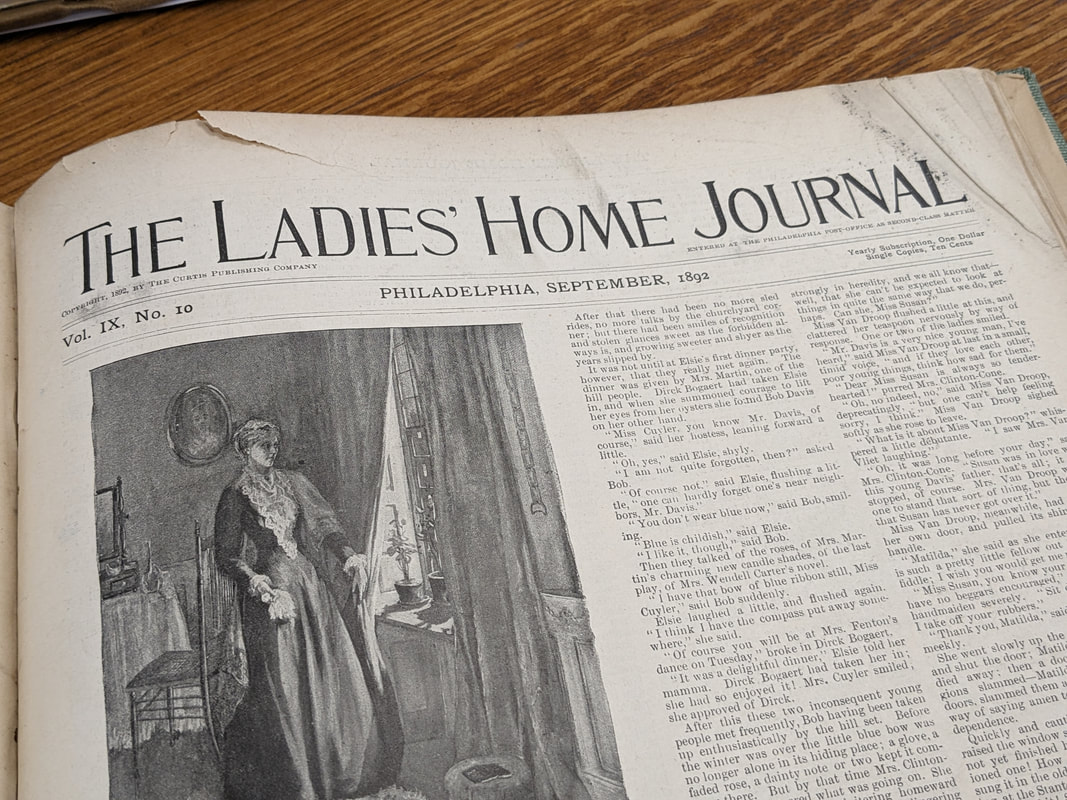

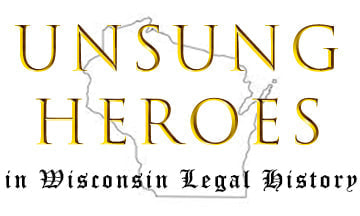
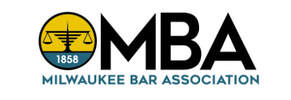
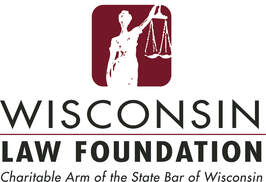
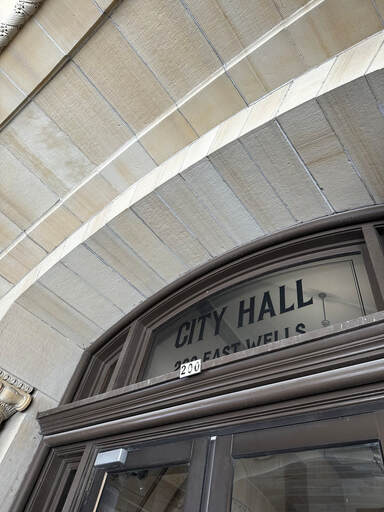

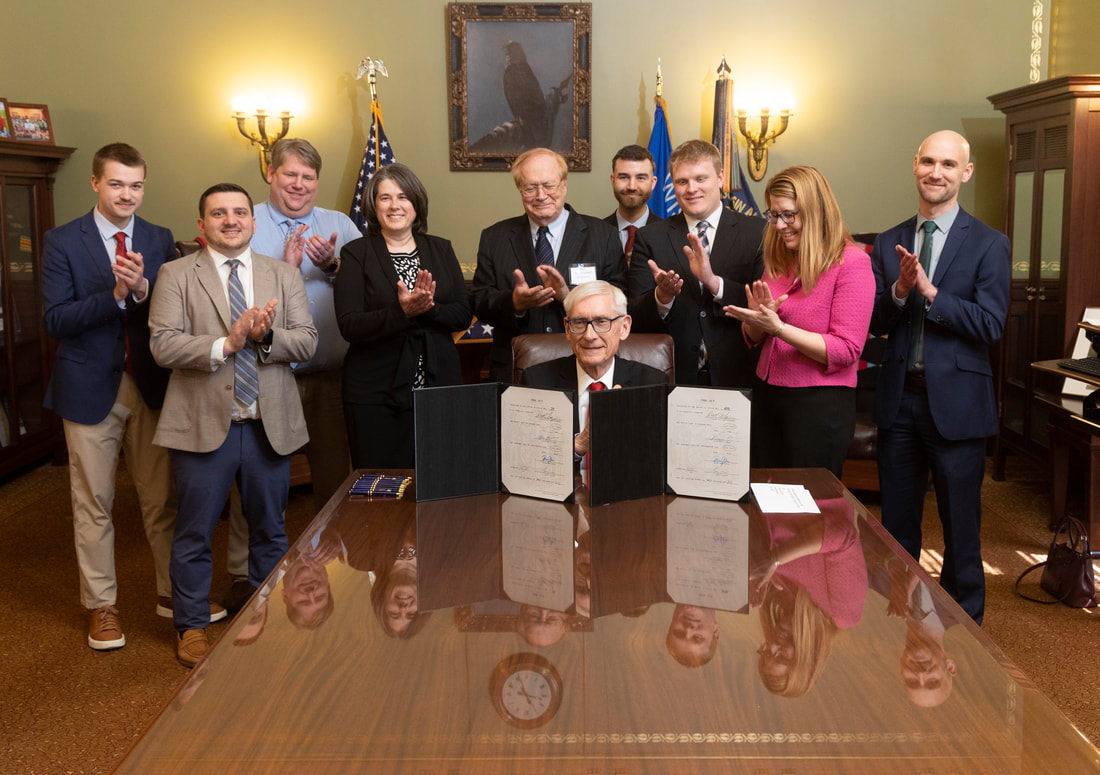
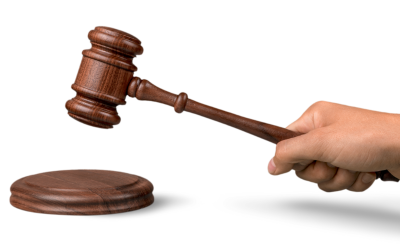
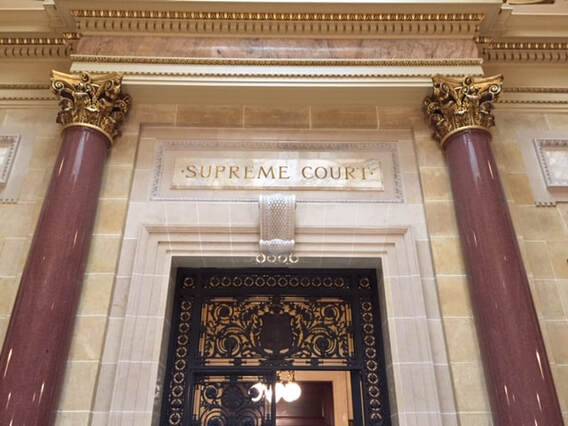
 RSS Feed
RSS Feed